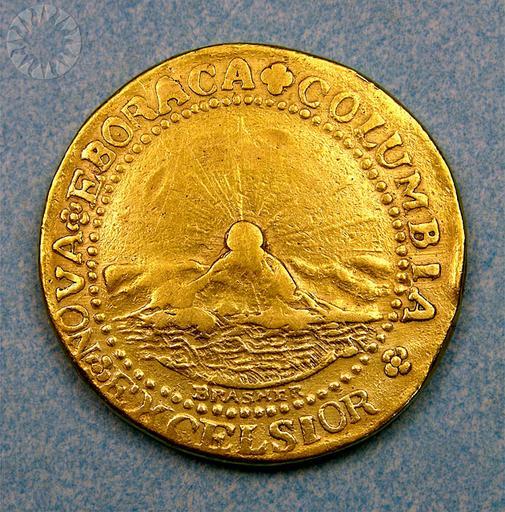MAKE A MEME
View Large Image

| View Original: | Brasher_Doubloon,_1787.jpg (631x640) | |||
| Download: | Original | Medium | Small | Thumb |
| Courtesy of: | www.flickr.com | More Like This | ||
| Keywords: legendary coins legendarycoins numismatics money smithsonian probably public domain probablypublicdomain circle round ancient SI Neg. 2005-27301. Date: 9/1/2005...The Brasher Doubloon is one of the most enigmatic coins in American numismatic history. We know when it was minted, who minted it, and approximately how many pieces were minted. But why was the coin minted? What were the intentions of its creator, Ephraim Brasher? Did he seek to render a public service, providing a new gold coin based on an old model: the onza, or doubloon of Spanish America? .Or was Brasher, an assayer and goldsmith, after a contract to provide copper coinage-minting and distributing these gold pieces to influence state legislators? We don't know. What we do know is that only seven of these doubloons are recorded. And if Brasher were angling for a contract to strike copper, he was singularly unsuccessful..Why were states issuing coining contracts anyhow? State-sponsored coinage was a natural outgrowth of the extreme federalism of the United States' first constitution, the Articles of Confederation. Under its statutes, individual states were sovereign entities, enjoying the right to issue coinage and "bills of credit," or currency. .A number of states (and Vermont, which was a separate country at the time) did both. New York was indecisive. The adoption of the U.S. Constitution in 1789 put an end to state coinages, and to the aspirations of people like Ephraim Brasher. .Soon there would be a new, national coinage in copper, silver, and gold, and private issues would no longer be needed-or so it was assumed..Click here to view the obverse...Credit: Tom Mulvaney (Smithsonian Institution) SI Neg. 2005-27301. Date: 9/1/2005...The Brasher Doubloon is one of the most enigmatic coins in American numismatic history. We know when it was minted, who minted it, and approximately how many pieces were minted. But why was the coin minted? What were the intentions of its creator, Ephraim Brasher? Did he seek to render a public service, providing a new gold coin based on an old model: the onza, or doubloon of Spanish America? .Or was Brasher, an assayer and goldsmith, after a contract to provide copper coinage-minting and distributing these gold pieces to influence state legislators? We don't know. What we do know is that only seven of these doubloons are recorded. And if Brasher were angling for a contract to strike copper, he was singularly unsuccessful..Why were states issuing coining contracts anyhow? State-sponsored coinage was a natural outgrowth of the extreme federalism of the United States' first constitution, the Articles of Confederation. Under its statutes, individual states were sovereign entities, enjoying the right to issue coinage and "bills of credit," or currency. .A number of states (and Vermont, which was a separate country at the time) did both. New York was indecisive. The adoption of the U.S. Constitution in 1789 put an end to state coinages, and to the aspirations of people like Ephraim Brasher. .Soon there would be a new, national coinage in copper, silver, and gold, and private issues would no longer be needed-or so it was assumed..Click here to view the obverse...Credit: Tom Mulvaney (Smithsonian Institution) | ||||